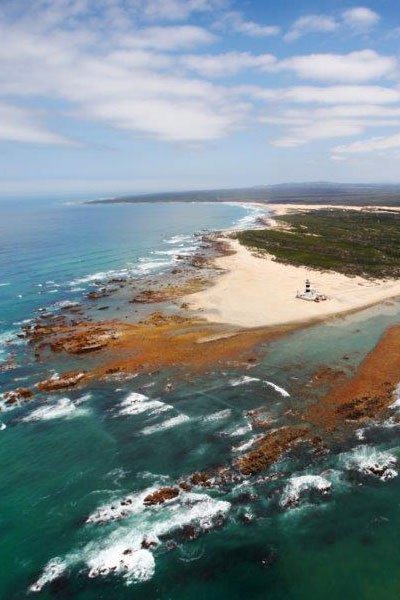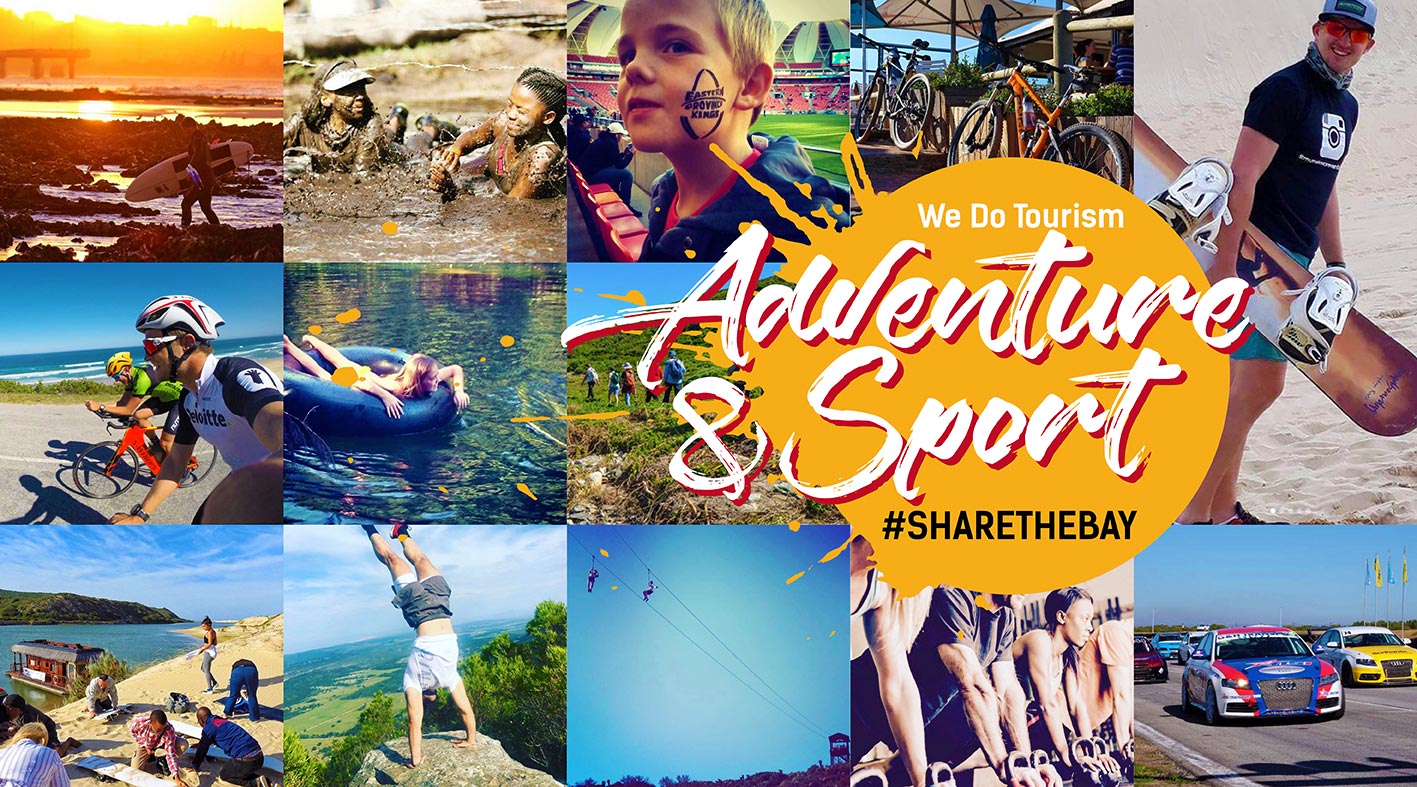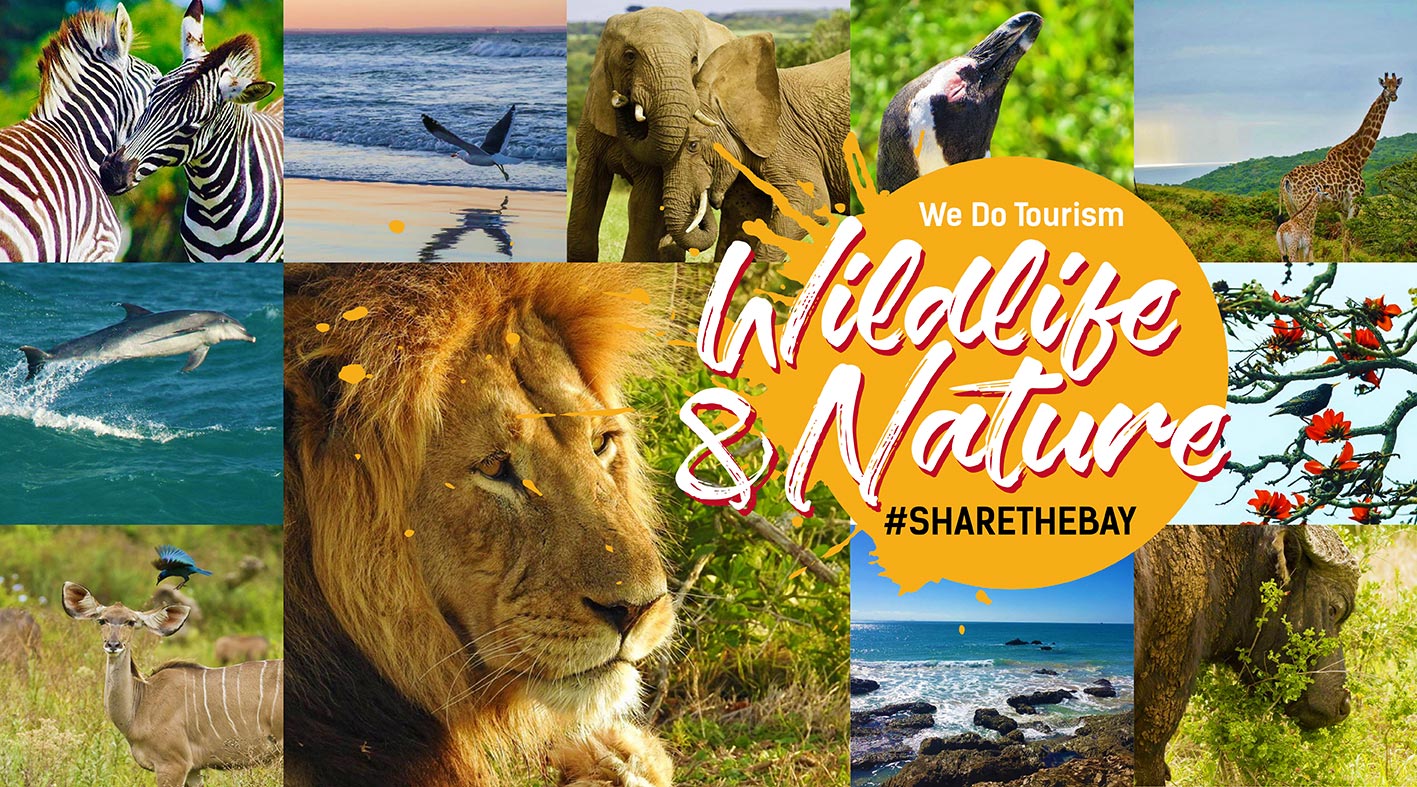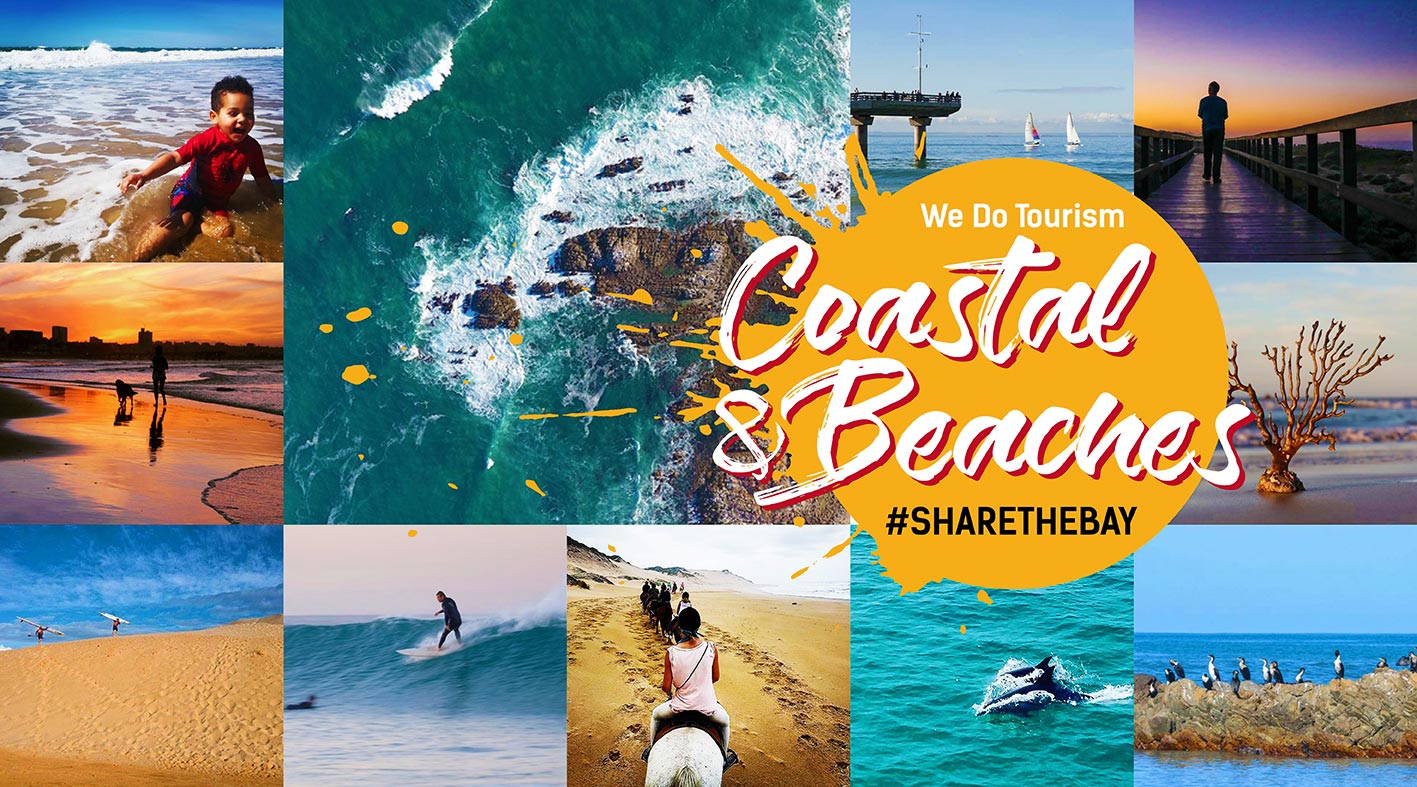Roseate Tern Hiking Trail
Location
Eastern Cape > Port Elizabeth > Summerstrand
Eastern Cape > Port Elizabeth > Summerstrand
Add to travel planner
Description

ROSEATE TERN HIKING TRAIL: (9.6 KM)
TRAIL TYPE: CIRCULAR
DURATION: 3 TO 4 HOURS
DIFFICULTY: EASY
RECOMMENDED HIKING TIMES: 08h00 – 16h30
A magnificent and captivating hike through the unspoilt beauty of the Cape Recife Nature Reserve that offers incredible views, historical landmarks, a wide variety of terrestrial and marine wildlife and some of the best birdwatching locations in the Bay.
IMPORTANT INFORMATION
Please remember that this is a Nature Reserve:
- All plant and animal life is protected and must not be disturbed or harmed.
- Please keep on the trail at all times.
- Minimum number three persons is recommended as a safety precaution.
- Please do not smoke or light fires while on the trail
- No Dogs Allowed.
- Do not litter.
- Carry at least two litres of drinking water per person.
- For reservation and general enquiries please contact: Reserve Manager: George Branford on +27 (0) 82 522 0298.
- In case of emergency while on the trail, please contact the Reserve Manager or 10111.
- No permit is required for hikers leaving their vehicles outside the entrance gate at Pine Lodge.
- Vehicle Entry past the boom requires an NMBM vehicle permit, available at Pine Lodge. A pass is required when visiting SANCCOB.
- In case of emergency please contact:
* South African Police Service: 10111
* Ambulance: 10177
* Fire Department: +27 (0) 41 585 1555
* Search and Rescue: +27 (0) 41 585 1555
- The Cape Recife Conservancy was formed to assist the NMB Municipality to protect, administer and promote all that the Cape Recife area has to offer. See www.caperecife.co.za.
HISTORY AND AREA
The 9 km circular Roseate Tern Hiking Trail starts at the entrance gate of the Cape Recife Nature Reserve and offers beautiful unspoilt beaches, natural dune vegetation, rocky outcrops coupled with a vast and interesting history.
The recent discovery of Ancient Khoisan fish traps, believed to have been constructed between 2000 and 4500 years ago at Cape Recife, is considered conclusive proof that the Khoisan were a major presence in the area. The area is rich in wildlife and intertidal marine life that served as a major source of food to the Khoi.
Sometime during late February 1488, Bartolomeu Dias’s squadron of three caravels rounded the Cabo de Roca (Cape Recife) and entered Baia da Roca – Algoa Bay. This was followed by Vasco da Gama, whom was the second European explorer to view Cape Recife, and then named Cabo do Arricife – Cape of the Reef – on his charts, when he entered Algoa Bay in December 1497 during his voyage to India.
Due to the vast number of shipwrecks, The Cape Recife Lighthouse was built from 1849 to 1851 and the first light beamed across the ocean on 1 April of that year. The lighthouse warns passing ships of the dangers of the romantically named Thunderbolt Reef – named after the HMS Thunderbolt, a British Royal Navy Sail and Paddle Frigate. Several natural hazards such as Thunderbolt Reef and Roman Rock, not far offshore, have claimed many a ship and offers some spectacular diving opportunities. Always a favourite destination for divers, the fertile reefs offer a wealth of biodiversity. Rich marine flora and fauna are found among the rocks and wrecks scattered beneath these waves.
Gqeberha (Port Elizabeth) also has some of the most complete collection of surviving coast artillery buildings and equipment dating from the Second World War (1939-45) of any port in South Africa. In order to offer advance warning of the approach of shipping and aircraft to the harbour, permission was given for the construction fortress observation posts along the coast, one being at Cape Recife. The Sea Hill Military Site was constructed to protect the bay during the 2nd World War (1939-1945). The site consisted of a Fort Observation Post, Artillery Bungalow, Riflemen’s Posts, Radar Tech Hut, Generator room, Radar Woman’s and Men’s Quarters, Mess, Recreation Room, and Native Military Corps Quarters.
The 366 hectare Cape Recife Nature Reserve was proclaimed in 1973 to protect its unique biodiversity and to preserve the natural beauty of the area for future generations.
The area is home to a variety of flora and fauna, including several endangered species, such as the African black oystercatcher, the Cape grysbok, and the blue duiker. Cape Recife is famous for providing excellent opportunities for birdwatching. The prime locations for birdwatching are situated at the sandy coastal beach area surrounding the lighthouse, as well as at the birdhide located along the trail.
The reserve also offers some of the best views from where one can see the annual migration of whales and dolphins within Gqeberha (Port Elizabeth).
EXPERIENCE AND EXPLORE
- Cape Recife Lighthouse: Activities on offer at the lighthouse include lighthouse tours, guided marine safaris, and upmarket overnight accommodation in the Cape Recife Port War Signal Station. See https://caperecife.com/.
- Shipping Beacon: One of the two shipping beacons at Cape Recife. The beacons that were used in the early days to guide ships into Algoa Bay before the advent of modern navigational equipment. Ships sailing along the southern coast towards Algoa Bay had to stay on a straight course until they lined up the two beacons. Only then was it safe to turn into the Bay and avoid running aground on the treacherous Thunderbolt Reef.
- Sea Hill Military Site: Old Fort Observation Post offering great views of the reserve and coast.
- Old Khoi Fish Traps: The area was also used extensively by the Khoi where they made use of fish traps and foraged the rock pools.
- SANCCOB: Coastal Bird Rehabilitation Centre. Visitors can experience the hospital and see the volunteers in action helping to save our environment, in particular the endangered African Penguin. Tours are every 30 minutes starting at 9:30 to 15:30. Home Pen feeds take place from 09h30 and in the afternoon from 14h30 daily. Please call 041 583 1830 for more information and to book. See www.sanccob.co.za.
- Thunderbolt Reef: The infamous reef has seen the end of many ships and one of the reasons for the construction of the lighthouse.
- Cobbles Surf Spot: Mellow right reef point ideal for longboarding.
- Pine Lodge: The resort offers various types of accommodation, a restaurant and activities such as a zipline and high rope adventure course, put-put, donkey car rides into the reserve, guided fatbike rentals and more. Contact Pine Lodge at +27 41 583 4004 or visit www.pinelodge.co.za.
PLANT AND ANIMALS
Top Fauna:
- Numerous Tern Species, incl. Roseate & Damara
- Freshwater Birds & Waders
- African Black Oystercatcher
- Cape Clawless Otter
- Whale & Dolphin Species
- Reptiles & Amphibians
Top Flora:
- Mountain Guarri
- Dune Saffronwood
- Dune Olive
- Members of Daisy Family
- Cape Coast Cabbagetree
- Tortoise Berry
TRAIL TYPE: CIRCULAR
DURATION: 3 TO 4 HOURS
DIFFICULTY: EASY
RECOMMENDED HIKING TIMES: 08h00 – 16h30
A magnificent and captivating hike through the unspoilt beauty of the Cape Recife Nature Reserve that offers incredible views, historical landmarks, a wide variety of terrestrial and marine wildlife and some of the best birdwatching locations in the Bay.
IMPORTANT INFORMATION
Please remember that this is a Nature Reserve:
- All plant and animal life is protected and must not be disturbed or harmed.
- Please keep on the trail at all times.
- Minimum number three persons is recommended as a safety precaution.
- Please do not smoke or light fires while on the trail
- No Dogs Allowed.
- Do not litter.
- Carry at least two litres of drinking water per person.
- For reservation and general enquiries please contact: Reserve Manager: George Branford on +27 (0) 82 522 0298.
- In case of emergency while on the trail, please contact the Reserve Manager or 10111.
- No permit is required for hikers leaving their vehicles outside the entrance gate at Pine Lodge.
- Vehicle Entry past the boom requires an NMBM vehicle permit, available at Pine Lodge. A pass is required when visiting SANCCOB.
- In case of emergency please contact:
* South African Police Service: 10111
* Ambulance: 10177
* Fire Department: +27 (0) 41 585 1555
* Search and Rescue: +27 (0) 41 585 1555
- The Cape Recife Conservancy was formed to assist the NMB Municipality to protect, administer and promote all that the Cape Recife area has to offer. See www.caperecife.co.za.
HISTORY AND AREA
The 9 km circular Roseate Tern Hiking Trail starts at the entrance gate of the Cape Recife Nature Reserve and offers beautiful unspoilt beaches, natural dune vegetation, rocky outcrops coupled with a vast and interesting history.
The recent discovery of Ancient Khoisan fish traps, believed to have been constructed between 2000 and 4500 years ago at Cape Recife, is considered conclusive proof that the Khoisan were a major presence in the area. The area is rich in wildlife and intertidal marine life that served as a major source of food to the Khoi.
Sometime during late February 1488, Bartolomeu Dias’s squadron of three caravels rounded the Cabo de Roca (Cape Recife) and entered Baia da Roca – Algoa Bay. This was followed by Vasco da Gama, whom was the second European explorer to view Cape Recife, and then named Cabo do Arricife – Cape of the Reef – on his charts, when he entered Algoa Bay in December 1497 during his voyage to India.
Due to the vast number of shipwrecks, The Cape Recife Lighthouse was built from 1849 to 1851 and the first light beamed across the ocean on 1 April of that year. The lighthouse warns passing ships of the dangers of the romantically named Thunderbolt Reef – named after the HMS Thunderbolt, a British Royal Navy Sail and Paddle Frigate. Several natural hazards such as Thunderbolt Reef and Roman Rock, not far offshore, have claimed many a ship and offers some spectacular diving opportunities. Always a favourite destination for divers, the fertile reefs offer a wealth of biodiversity. Rich marine flora and fauna are found among the rocks and wrecks scattered beneath these waves.
Gqeberha (Port Elizabeth) also has some of the most complete collection of surviving coast artillery buildings and equipment dating from the Second World War (1939-45) of any port in South Africa. In order to offer advance warning of the approach of shipping and aircraft to the harbour, permission was given for the construction fortress observation posts along the coast, one being at Cape Recife. The Sea Hill Military Site was constructed to protect the bay during the 2nd World War (1939-1945). The site consisted of a Fort Observation Post, Artillery Bungalow, Riflemen’s Posts, Radar Tech Hut, Generator room, Radar Woman’s and Men’s Quarters, Mess, Recreation Room, and Native Military Corps Quarters.
The 366 hectare Cape Recife Nature Reserve was proclaimed in 1973 to protect its unique biodiversity and to preserve the natural beauty of the area for future generations.
The area is home to a variety of flora and fauna, including several endangered species, such as the African black oystercatcher, the Cape grysbok, and the blue duiker. Cape Recife is famous for providing excellent opportunities for birdwatching. The prime locations for birdwatching are situated at the sandy coastal beach area surrounding the lighthouse, as well as at the birdhide located along the trail.
The reserve also offers some of the best views from where one can see the annual migration of whales and dolphins within Gqeberha (Port Elizabeth).
EXPERIENCE AND EXPLORE
- Cape Recife Lighthouse: Activities on offer at the lighthouse include lighthouse tours, guided marine safaris, and upmarket overnight accommodation in the Cape Recife Port War Signal Station. See https://caperecife.com/.
- Shipping Beacon: One of the two shipping beacons at Cape Recife. The beacons that were used in the early days to guide ships into Algoa Bay before the advent of modern navigational equipment. Ships sailing along the southern coast towards Algoa Bay had to stay on a straight course until they lined up the two beacons. Only then was it safe to turn into the Bay and avoid running aground on the treacherous Thunderbolt Reef.
- Sea Hill Military Site: Old Fort Observation Post offering great views of the reserve and coast.
- Old Khoi Fish Traps: The area was also used extensively by the Khoi where they made use of fish traps and foraged the rock pools.
- SANCCOB: Coastal Bird Rehabilitation Centre. Visitors can experience the hospital and see the volunteers in action helping to save our environment, in particular the endangered African Penguin. Tours are every 30 minutes starting at 9:30 to 15:30. Home Pen feeds take place from 09h30 and in the afternoon from 14h30 daily. Please call 041 583 1830 for more information and to book. See www.sanccob.co.za.
- Thunderbolt Reef: The infamous reef has seen the end of many ships and one of the reasons for the construction of the lighthouse.
- Cobbles Surf Spot: Mellow right reef point ideal for longboarding.
- Pine Lodge: The resort offers various types of accommodation, a restaurant and activities such as a zipline and high rope adventure course, put-put, donkey car rides into the reserve, guided fatbike rentals and more. Contact Pine Lodge at +27 41 583 4004 or visit www.pinelodge.co.za.
PLANT AND ANIMALS
Top Fauna:
- Numerous Tern Species, incl. Roseate & Damara
- Freshwater Birds & Waders
- African Black Oystercatcher
- Cape Clawless Otter
- Whale & Dolphin Species
- Reptiles & Amphibians
Top Flora:
- Mountain Guarri
- Dune Saffronwood
- Dune Olive
- Members of Daisy Family
- Cape Coast Cabbagetree
- Tortoise Berry
MAP
Latitude : -34° 0' 52.48" S | Longitude : 25° 41' 31.94" E
Image Gallery
Services
| Groups Accepted | Yes |
| Car Parking Available | Yes |
| Day Visitors Allowed | Yes |
| Children Allowed | Yes |
Experience
Things to See and Do
Adventure & Sports
Green Flag Trails
Hiking
Hiking Trails
App Guides
Sand to Sea
Top Attractions
Walk or Pedal
Coastal & Beaches
Hiking Trails
Wildlife & Nature
Green Flag Trails
Hiking Trails
Wilderness Trails





















 Please wait!
Please wait!